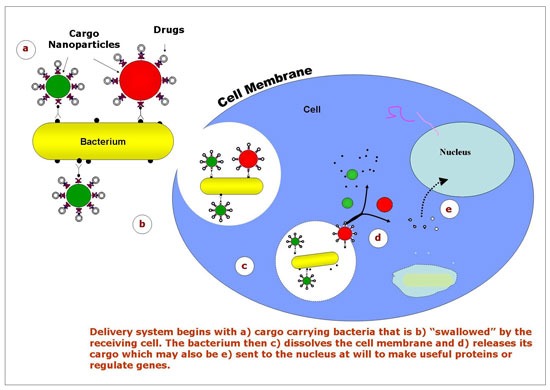Electron beam 'carves' nanodevices
Physicists are using a new technique to craft some of the tiniest metal nanostructures ever created, none larger than 10 nanometers.
Jun 18th, 2007
Read more
Physicists are using a new technique to craft some of the tiniest metal nanostructures ever created, none larger than 10 nanometers.
Jun 18th, 2007
Read moreA unique nanoparticle is proving promising as a drug delivery device for treating glaucoma, an eye disease that can cause blindness and affects millions of people worldwide.
Jun 18th, 2007
Read moreA novel nanomachining process will help manufacturers produce superior nanoscale devices to perform important functions such as detecting DNA and precisely controlling drug release.
Jun 15th, 2007
Read morePolicies are needed to promote the development of nanotechnologies, and funding is needed to carry out research into the benefits and risks of these new technologies for both human health and the environment. These were the main messages coming out of a session on nanotechnology and the environment held during Green Week, an annual event organised by the European Commission.
Jun 15th, 2007
Read moreUsing magnetic and fluorescent nanoparticles capable of binding tightly to molecules found only on the surface of cancer cells, scientists have developed a method for collecting and detecting multiple cancer cells from biological samples.
Jun 15th, 2007
Read moreQuantum dots, when injected into animals with brain tumors, accumulate within the outer regions of those tumors. The quantum dots are readily visible when irradiated with light, identifying the outline of the tumor.
Jun 15th, 2007
Read moreTwo prestigious nanotechnology prizes will be awarded at "Productive Nanosystems: Launching the Technology Roadmap," a conference sponsored by Society of Manufacturing Engineers and Foresight Nanotech Institute with the support of Battelle, to be held on October 9-10, 2007 in Arlington, Virginia.
Jun 14th, 2007
Read moreThe Engineering and Physical Sciences Research Council, the UK Government's leading funding agency for research and training in engineering and the physical sciences, has appointed Professor Richard Jones of the University of Sheffield as the Senior Strategic Advisor for Nanotechnology.
Jun 14th, 2007
Read moreIn a new take on use of luminescent nanoparticles as cancer imaging probes, a new type of metal-containing nanoparticles emits light for several hours after they are initially excited.
Jun 14th, 2007
Read moreIn an attempt to circumvent the mechanisms that cancer cells use to avoid cell death following chemotherapy, researchers have created a polymeric nanoparticle that delivers a one-two punch to multidrug resistant ovarian cancer cells.
Jun 14th, 2007
Read moreBacteria from an abandoned mine excrete proteins that cause metal nanoparticles to aggregate. The bacteria are binding and immobilizing the metals in the nanoparticles and the nanoparticles themselves, which are potentially toxic to the bacteria.
Jun 14th, 2007
Read more Researchers have succeeded in carrying out calculations with two quantum bits, the building blocks of a possible future quantum computer.
Researchers have succeeded in carrying out calculations with two quantum bits, the building blocks of a possible future quantum computer.
Jun 14th, 2007
Read moreSpecialized pulsed lasers have been used to inject individual cells with a variety of materials.
Jun 14th, 2007
Read moreResearchers report a double inversion of a nanoparticle-containing emulsion: By the successive addition of a surfactant, they were able to convert an oil-water emulsion into a water-oil emulsion and then back again.
Jun 14th, 2007
Read moreThe hypothesis: nanoparticles would alleviate the damaging effects generally caused by the freezing process.
Jun 14th, 2007
Read more Researchers have shown that common bacteria can deliver a valuable cargo of "smart nanoparticles" into a cell to precisely position sensors, drugs or DNA for the early diagnosis and treatment of various diseases.
Researchers have shown that common bacteria can deliver a valuable cargo of "smart nanoparticles" into a cell to precisely position sensors, drugs or DNA for the early diagnosis and treatment of various diseases.
Jun 13th, 2007
Read more